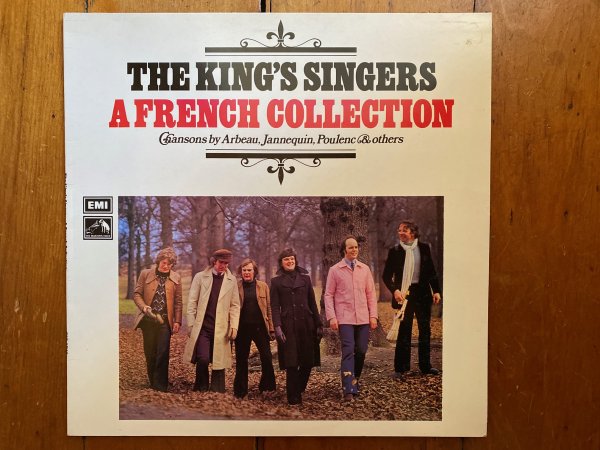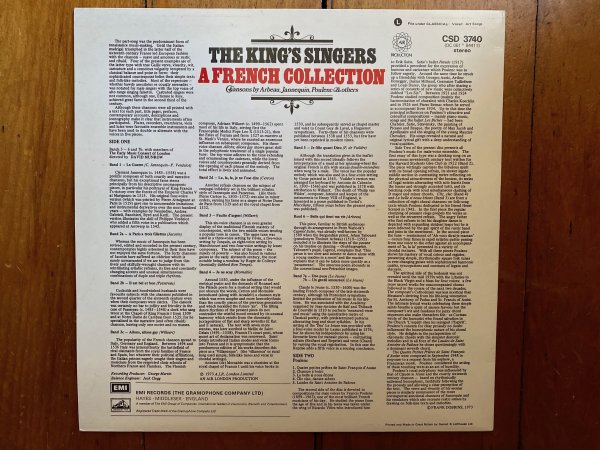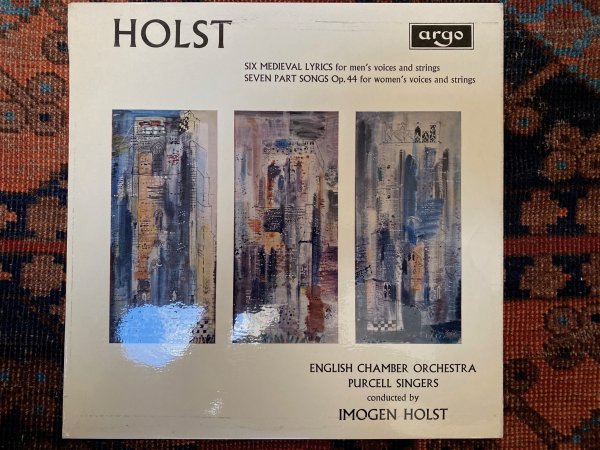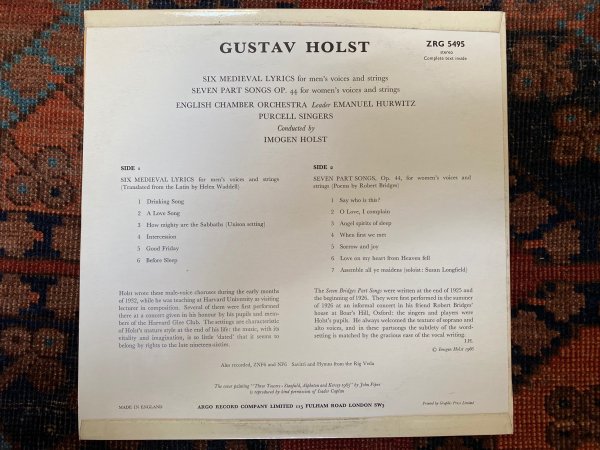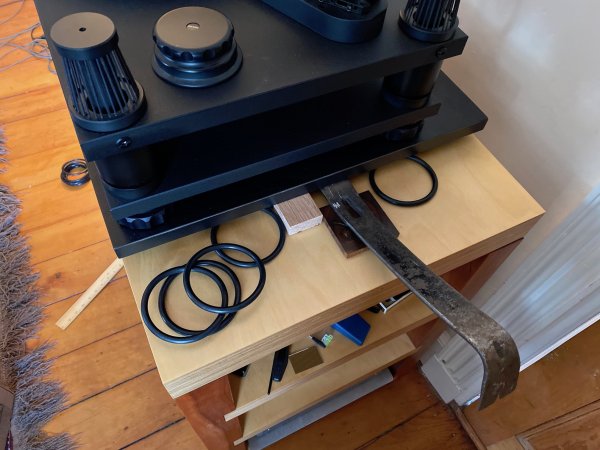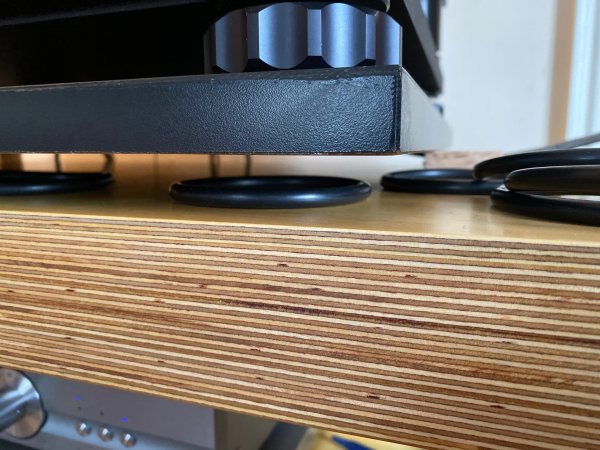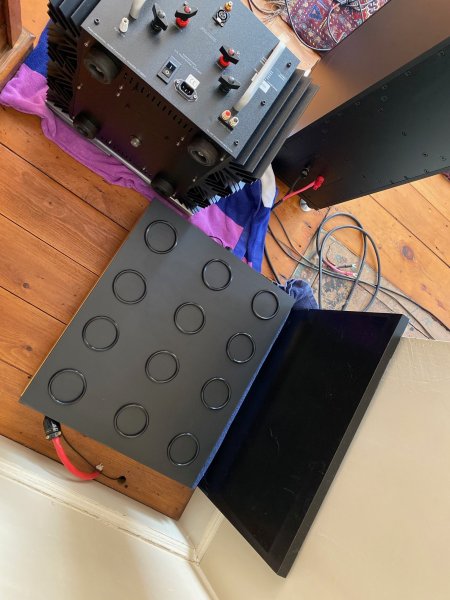Nice write-up.
What was the album?
What is the composition of the O-rings?
Thank you Tim. The album is the King's Singers, A French Collection. Great stuff. One of the indications that I was moving in the right direction with this latest change was hearing the ways in which this recording has changed relative to another choral recording I love, Host's Six Medieval Lyrics and Seven Part Songs. Both recordings were recommended to me by Myles Astor. Photos below.
When I first heard these recordings in my system, the spatial information was fairly distinct between the two recordings. The Holst chorus is larger and more distant and they are in a big space spread wide in my room pretty far behind and outside the speakers. The female soloists on side two stand clearly in front of the chorus. The chorus seems raised. There is an ethereal and grand scale. The King's Singers, all male, are more up close and intimate. They are positioned on the ground right in front of the listener. It is a small group and they are bunched up just behind and between the speakers. The mic is closer, and I had not quite been able to make out the character of the venue in which they sing.
As I have been making changes to my system, the Holst record has more or less remained the same while the King's Singers have become more articulate and present, I think indicative of the closer mic position. With this latest change of adding O rings underneath the turntable plate, the differences between the two recordings suddenly became much more distinct.
Now, the Holst singers are spread way back and cover the entire front wall of my room with the soloists clearly positioned in front with air and space around them, and with more presence. The voices are less flat and blended sounding. The sections are more distinct and the words much easier to understand. The King's Singers, on the other hand, remain just beyond the outer edge of my speakers, but they are now more layered than before, their individual heights are more distinct, their voices are more clear, they are much more present in front of the listener, and shockingly, it is now clear that they are singing in a large space because their voices now reflect against a wall way behind them. I had simply not heard that before. I had no idea what kind of a space they were in, and now it is much more evident.
The contrast between the two recordings has only grown with this latest experiment. I have not heard the recording venue information or sense of presence so clearly from these two superb recordings in any other system in which I have heard them. This is when I knew lifting that steel plate off of the rack's plywood topshelf and supporting it with these O rings was a huge step in the right direction.
Curiously, I have received pushback from someone who thinks I am actually introducing noise into the system with these plates because I observed an increase in their ringing when placed on the O rings and tapped with a metal stick. They had been much more damped with sitting on the wool felt right on the plywood shelves. I have never associated additional noise or colorations with an increase in clarity, information retrieval, and a more natural sound. To me, the sound seems less damped. It is more alive with much more resolution.
The results of my listening impressions of these two recordings, plus careful before and after listening to Art Pepper + ELEVEN, Holst's Planets, Beethoven's Violin Concerto, and various solo violin and cello recordings, indicates to me exactly the opposite of increased noise or colorations: there has been an increase in clarity and a decrease in colorations, leading to increases in resolution and naturalness and listening enjoyment. It is all for the positive with no tradeoffs that I have heard so far.
I do not know the composition of the O-rings. They are thick rubber, not too hard, not too soft. Here is a link to the product I ordered from Amazon: https://www.amazon.com/413-Buna-N-Ring-Durometer-Round/dp/B0051XYDJA/ref=mp_s_a_1_10?
